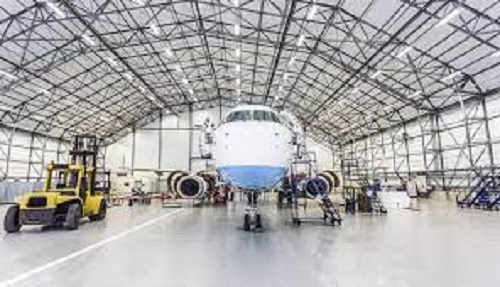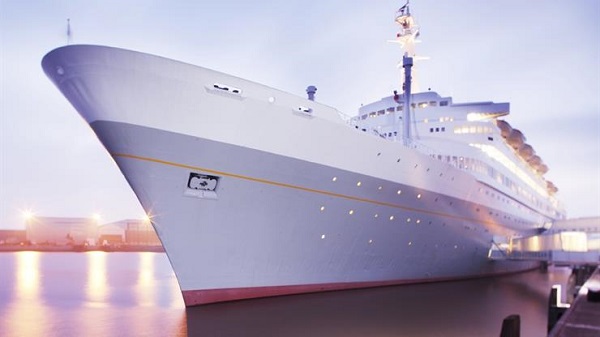How To Establish A Modern Airplane Hangar

Airplane hangars have been around since the dawn of flight, but modern hangars are more complicated and costly than ever before. Numerous technological advancements, shortened project schedule requirements, and increased regulatory oversight have made the management of a successful hangar project much more demanding.
The greatest challenge faced by a new hangar project team is to properly manage schedule, cost, and quality throughout the planning, design, and construction phases of the hangar project. The key to successfully meeting this challenge is to carefully plan the hangar before moving to the design and construction phases of the project (see Planning Considerations).
A properly engineered project plan allows all other aspects of the project to proceed as simply as possible, while minimizing complicated and costly factors such as multiple design and construction packages, bid escalation due to uncertainty, high change rates, estimated-cost construction contracts, and large project management staffs. The planning phase yields the highest opportunity for saving cost while requiring relatively insignificant project funding to perform startup.
A good hangar project plan specifically addresses the following:
Airline Objectives
The category of airline objectives encompasses the specific maintenance and operational requirements of the new airplane hangar facility. These requirements must be identified early in the project to ensure the hangar will support the needs of the airline. Specifically, the hangar project team should
Identify the current and long-term projected airplane fleet, including the number of airplanes that will use the facility, the annual use of airplanes, and maintenance-hour requirements.
Identify the types of maintenance to be performed, the number of components annually serviced, and estimated workload projections including room and space requirements. In addition, the team should identify specific shop-equipment needs to determine the building’s mechanical and electrical service requirements.
Assess airplane access requirements. The height of the hangar will be determined by the models of airplanes to be housed, the variety of work to be performed on those airplanes, regulatory requirements, and the types of airplane-access systems to be used. Areas for the project team to consider include airport obstruction height limitations (as required by U.S. Federal Aviation Administration federal aviation regulation 77), control tower line-of-sight issues, airport traffic control and radar systems, floor-mounted portable work stands and docks, roof-mounted suspended docks, teleplatforms, personnel protection systems, overhead traveling cranes, and airplane jacking or landing-gear pits.
Assess airplane layout requirements. As with hangar height, the internal dimensions of the hangar will be determined by the types and number of airplanes housed and the work performed. In addition, possible insurance or regulatory authority clearance requirements as well as maintenance policy will affect the internal dimensions of the hangar. Areas to consider include required horizontal clearances around airplanes including stands and floor- or roof-supported maintenance docks, the ability to move airplanes while others are in the hangar, tail-in versus nose-in airplane-parking configurations, building setback requirements, the proximity to adjacent buildings, the use of tail doors, and the installation of floor airplane power-supply stations.
Assess company standards for interior and exterior finish quality, security, facility maintenance, access for people with disabilities, and corporate image. Once the airline’s objectives for the hangar have been established, the project team must analyze certain facility design and construction elements to ensure the hangar design will support the airline’s objectives.
Airport-Related Issues
Airport-related issues are facility issues that must be closely coordinated with regulatory, airport, and environmental authorities. The hangar project team should consider the following elements:
Site location : Determine the areas available for development and the procedures for procuring the land. For site selection, consider the ability to easily maneuver current and future airplanes from the site, taxiway access requirements, existing rotary aircraft flight paths, and proximity to airline operations, runways, taxiways, and parking. The potential for horizontal and vertical expansion of the facility is also an important consideration, as are options for adjacent or other air- or land-side locations.
Terms and conditions: Evaluate leasehold agreements, potential land acquisition, zoning issues, environmental limitations, setback requirements, and compatibility with the airport master plan.
Government and community: Consider community attitudes toward airport development, potential local or state financial inducements for development, development schedule limitations, established application processes and points of contact, and airport or local jurisdiction site- development criteria.
Environmental conditions and noise-abatement issues: Evaluate the likelihood and effect of severe weather (e.g., hurricanes, tornadoes, hail), earthquakes, prevailing winds, extreme heat or cold, bird hazards, and visibility problems. Also consider noise issues that may require dedicated noise-abatement facilities for engine and daytime taxiway runups.
Airport operations: Review current and future airport capacity, runway capacity, airport navigation systems, landing fees, hours of operation, snow removal and deicing capabilities, airport fueling and defueling, air- and land-side access, airplane rescue and firefighting, and airport security.
Insurance underwriter reviews: Contact the airline’s insurance company to find out whether it has requirements beyond those required by the local building jurisdiction. Consider inviting one of the insurance company’s loss prevention engineers to the hangar planning sessions and the early design meetings to ensure the final design is consistent with insurance requirements.
Site Development
Site development requirements are facility issues dealing with the land on which the hangar will reside. The hangar project team should perform the following studies to gain a realistic understanding of project requirements:
Survey the site under consideration for existing buildings, parking areas, or other structures. If the site has existing structures, it is important to identify who will be responsible for demolition of those structures.
If demolition is necessary, survey all structures for hazardous materials such as asbestos and lead paint. Hazardous materials may be costly to remove and significantly increase project schedule requirements.
Survey the site for contaminated soils, ground water, or other materials requiring environmental remediation before development. This can have serious cost and schedule implications for a hangar project.
Have a soils engineer make necessary field tests to establish foundation and pavement design criteria. The study should also address any potential unstable soils or high watertable conditions. If unstable conditions are encountered, additional site preparation and special foundations may be required and should be identified early in the project.
Assess landscaping requirements.
Assess parking requirements for airplanes, cars, buses, and service vehicles.
Site Utilities
Site utility requirements are facility issues involving the utilities that will be needed by the hangar facility. The hangar project team should perform the following studies:
Identify, locate, and establish the capacities for existing utilities to determine whether they will be sufficient to meet hangar facility utility demands.
Meet with the airport authority or utility purveyor to develop requirements for connecting or extending existing utility systems. In some situations, airport authorities may provide utility connections to the hangar site at no additional cost. In other instances, they may require fees and design approval before accessing airport utilities. In other cases, the airport may not have the needed utilities and the airline will have to bring in such services at its own expense. These issues can affect both project cost and schedule and should be considered early in the planning process.
Identify the utility systems required to support the hangar facility: Potable water, fire water, and airplane wash water, including water recycling systems and oil-water separators. Typically, hangars with doors higher than 28 ft require overhead-deluge aqueous film forming foam (AFFF) fire-protection systems. For DC-10, 767, and larger airplanes, underwing foam monitors are also often required. Hangar fire-protection systems can require water storage capacities of 200,000 to 500,000 gal or more. Above- or below-ground water storage tanks may be required if the local airport or municipality cannot furnish necessary quantities. Further, many airport water systems cannot meet flow-rate requirements without supplemental on-site pumps.
Sanitary and industrial-waste sewer systems: Hangar fire-protection water often is discharged at rates of 3,000 gal or more per minute. In many situations, the discharged water must be directed, contained, treated, and either taken off site by waste-handling contractors or pretreated and metered into the sanitary sewer system.
Storm-water sewer systems: This includes potential require-ments to treat or retain on-site storm water.
Electrical power, including emergency power availability: The stability of current or future power sources should be carefully analyzed with respect to airplane fleet ground-power requirement specifications and power-quality sensitive systems such as computers that may be incorporated into the hangar facility.
Natural gas, compressed air, high-pressure steam, and chilled water systems.
Telephone, data, video, and security systems.
Heating systems: Most hangars in moderate to cold climates have heating systems. Hangars in tropical environments often are partially open and use natural ventilation; hangars located in desert environments may require air conditioning. Paint and strip hangars, regardless of their geographical location, typically require controlled temperature, humidity, and air-quality systems.
Building Requirements
Building requirements are the elements of planning used to prepare detailed documents from which a construction contractor can build the hangar. When a designer completes the design phase of the project, the completed design package consists of two major categories of information: plans and specifications. Plans are drawing instructions to the construction contractor that describe the physical characteristics of the facility. Specifications are written instructions to the construction contractor that describe quality requirements.
For example, the plans will stipulate where concrete is required, whereas the specifications will specify how strong the concrete should be. When the hangar project team is determining building requirements, it should address all the applicable areas listed.







